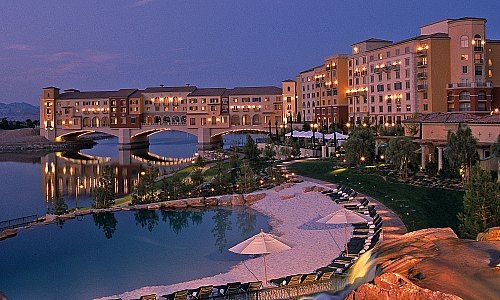Credit Suisse CEO Tidjane Thiam is waving goodbye to another legacy he inherited – with the help of a judge in the U.S. state of Idaho.
Tidjane Thiam, the CEO of Credit Suisse (CS), will never have heard of Justin L. Quackenbush. Not anymore. Quackenbush is a judge in Idaho who threw out a lawsuit against CS this week claiming $24 billion, according to a report by the «Wall Street Journal».
Thiam and his team of executives is restructuring the bank to make it fitter and is also reducing legacies from the times of high-risk banking.
Credit Suisse Whizzes
One of those legacies is a specific type of mortgages, a product that Credit Suisse finance whizzes helped invent and then sold to owners and developers of luxury holiday resorts across the U.S.
The product was called «dividend recapitalization loan». CS helped owners of resorts to take a mortgage – typically to the tune of hundreds of millions – and transfer the risk to new investors.
CS took its share, of course. During the financial crisis, a slew of mortgages went bust in the financial crisis or had to be foreclosed.
Yellowstone – Las Vegas – Hawaii
Examples of CS loans that went bust are $375 million for the Yellowstone Club in Montana, $250 million for the Tamarack Resort in Idaho, $540 million for a golf resort in Las Vegas, $400 million for the Turtle Bay Resort on Hawaii and $675 million for the Ginn Resorts in Florida, North Carolina and on the Bahamas.
The loans built on estimates of the value of the resorts, which based on estimates made by Cushman & Wakefield real estate advisory, a company that CS still works with.
The valuations of Cushman & Wakefield were unrealistically high, according to some analysts, and subsequently prices collapsed during the financial crisis.
Class Law Suit
In 2010, a complaint to the tune of $24 billion was lodged. Some 3,000 owners of real estate and investors had joined hands. Their claim: CS – armed with the advice of Cushman & Wakefield –had put the resorts in debt to a level that would allow it to claim the resorts in a crash and sell them at a profit.
The claimants had lost some $8 billion and demanded triple that amount in compensation.
No Proof for CS Wrongdoing Found
Judge Quackenbush ended six years of legal squabble in a 45-page explanatory ruling, which refuted the plaintiff's argument that CS had aimed to get its hands on the resorts. He also rejected the accusation that Cushman & Wakefield's valuations had been the cause of the losses.
Also, the plaintiffs hadn't been able prove that it was CS which caused the failures of the resorts with the loans and not the broader housing market collapse.
Unusual Valuation Model
The valuation model used by CS and its advisers wasn't the standard, as it priced in expected future earnings of the resorts. That way the resorts and luxury real estate were priced higher, enabling the issuance of higher loans on the properties.
In fact, CS did assume ownership of some properties following the crash of the real estate market.
Even after this relief for Thiam, the legacy of times past hasn't been banished from CS' thoughts entirely yet. A claim by hedge fund Highland Capital Management against CS is still pending.
A court last autumn ordered CS to pay $288 million in compensation for the Las Vegas golf resort. CS is appealing the verdict.


































